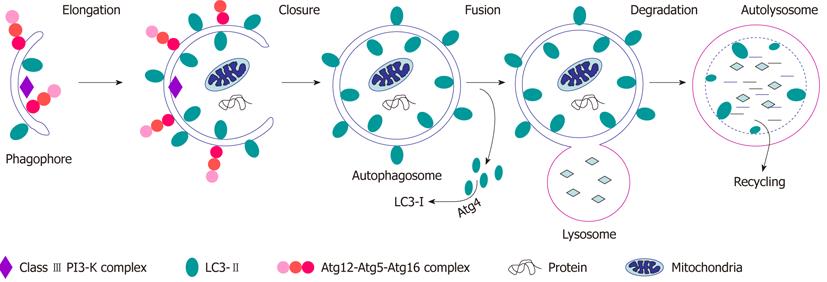Copyright
©2012 Baishideng Publishing Group Co.
Figure 1 The process of autophagy.
Autophagy is initiated with the formation of the phagophore, mediated by the class III PI3-K complex that includes Vps34, Vps15, Atg14 and Beclin 1, and progresses through a succession of steps: elongation of the phagophore and engulfment of cytoplasmic material targeted for degradation; formation of the autophagosome, with delipidation of LC3-II by Atg4; fusion of the autophagosome with the lysosome to form the autolysosome; degradation of the vesicle content by lysosomal hydrolases; and recycling of the degradation products (amino acids, lipids and sugars) for ATP production. The autophagy machinery consists of two conjugation systems required for the elongation and extension of the phagophore: Atg5-Atg12, which subsequently oligomerizes with Atg16, and LC3-PE, LC3-II. LC3-II is formed as a result of the Atg4-mediated cleavage of cytosolic LC3. The resulting form of LC3, LC3-I is subsequently conjugated to a single PE molecule to form LC3-II, a reaction mediated by Atg3 and Atg7.
- Citation: Abounit K, Scarabelli TM, McCauley RB. Autophagy in mammalian cells. World J Biol Chem 2012; 3(1): 1-6
- URL: https://www.wjgnet.com/1949-8454/full/v3/i1/1.htm
- DOI: https://dx.doi.org/10.4331/wjbc.v3.i1.1









